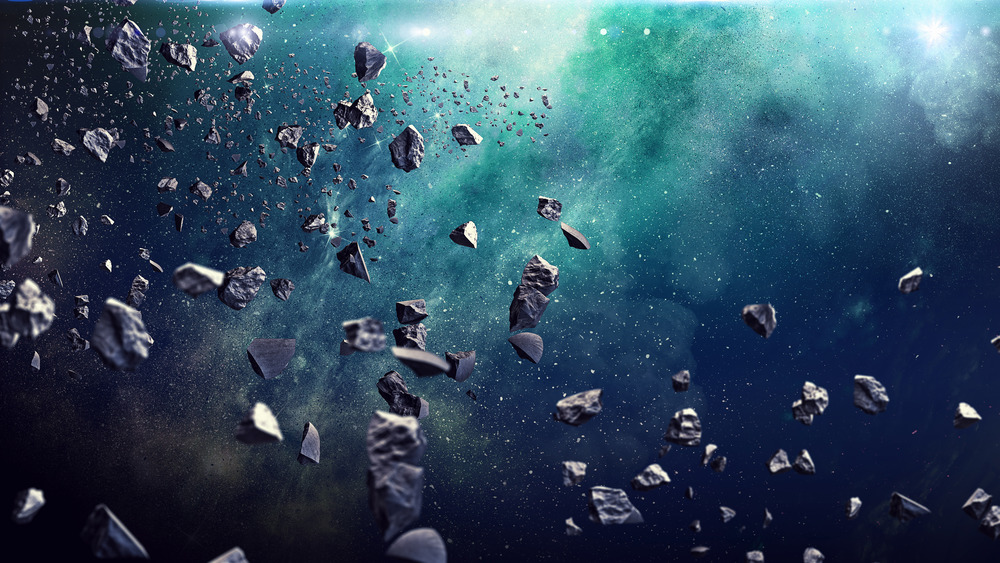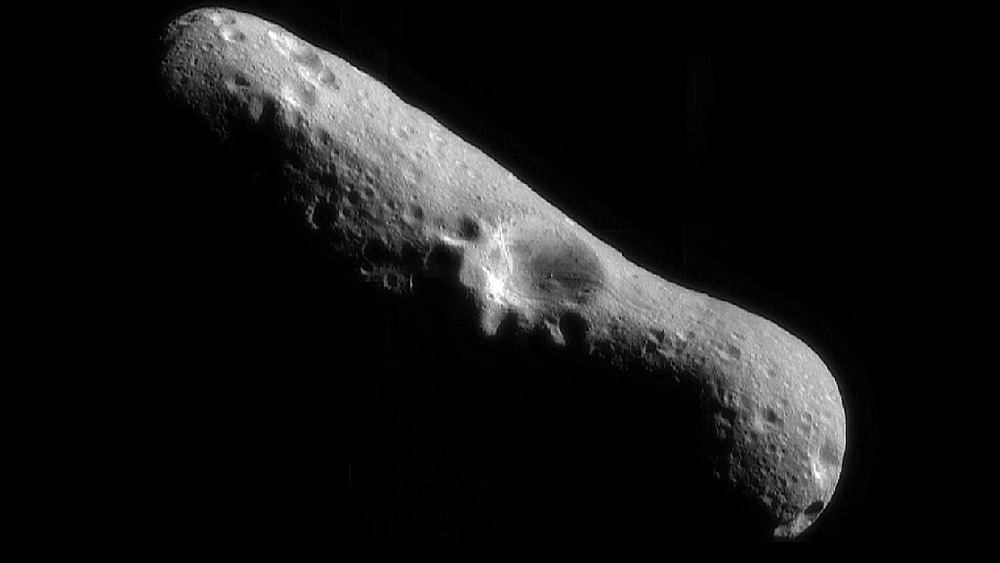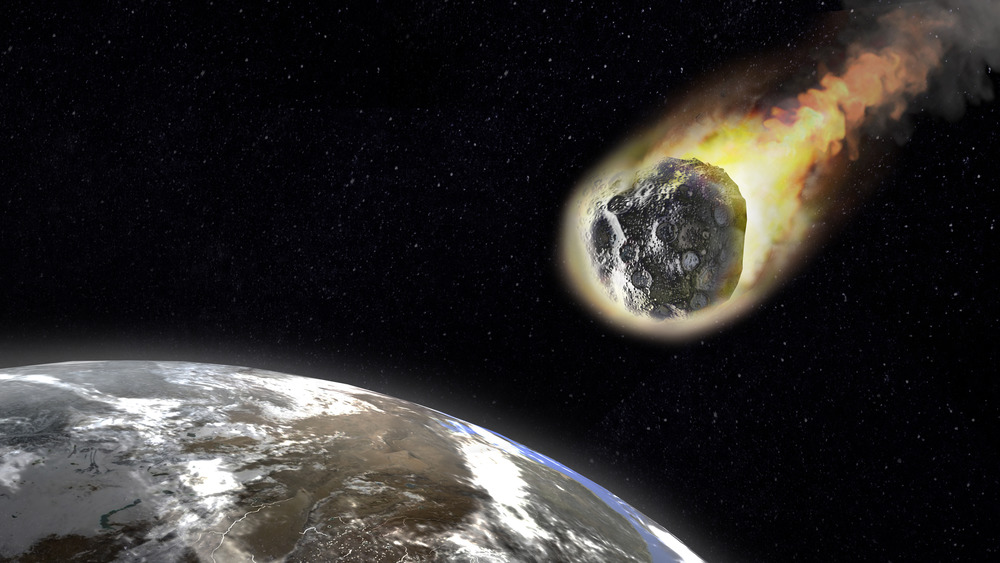This Is How Asteroids Form
We all know that asteroids are looming out there in space, just waiting for our orbits to align so they can take us out just like they did the dinosaurs. But little do they know we've got some tricks up our sleeves. (They must not have seen Armageddon.) But really, what exactly are asteroids and how are they different from meteors and meteorites?
Well, compositionally speaking, there's no difference. Technically, they're all asteroids. It all depends on where in the solar system you find one. According to Astro EDU, asteroids are pretty much what you think they are: big rocks that orbit the sun. When one burns up in the Earth's atmosphere, we call it a meteor, or, more colloquially, a shooting star. If one is big enough to break through into the atmosphere and strike Earth, it's called a meteorite. Scientists believe that a whopper of a meteorite slammed into the Yucatan Peninsula, in modern-day Mexico, some 65 million years ago, bringing the age of stupid, outsize, Bruce Willis-less reptiles to an end.
The folks over at Space.com call asteroids the "leftovers" from all the stuff in our solar system that didn't make it into a planet or moon when our corner of the galaxy formed around 4.6 billion years ago. Fun fact: millions of asteroids trace their orbits around the sun, most of them concentrated in the asteroid belt between Mars and Jupiter, but their total mass is actually less than the moon's.
What are asteroids made of?
Another fun thing about asteroids is that no two of them are alike. Some of the larger ones are round like planets, but many are irregularly shaped and have jagged surfaces, which scientists believe are covered in dust. They also range in size, from little guys as small as a pebble to oversized boulders with diameters of hundreds of miles. The asteroid named Ceres, a large, spherical example, is about 583 miles in diameter. It and others like it are quite often pockmarked by impact craters from other asteroids slamming into them. Another big asteroid, Vesta, boasts a huge 285-mile-wide crater on its surface.
The smallest asteroid humans have ever directly studied is called 2015 TC25. It measures only six feet across. It flew relatively close (galactically speaking) to Earth in 2015, according to the University of Arizona astronomers who discovered it: 128,000 kilometers from here. To put that into perspective, that's a third of the distance to the moon. Vishnu Reddy, the lead astronomer on the project, said that being able to detect and study asteroids this small helps scientists understand bigger asteroids, many of which can be more like a huge floating pile of rubble, rather than one big solid rock. Luckily, he said, it was pretty unlikely that 2015 TC25 would strike Earth, and added that the likelihood that a big one will impact the planet is even smaller. But still, it could happen, right?
Will an asteroid strike Earth any time soon?
The world faces quite a few serious problems in 2021, but rest assured that an asteroid collision isn't one of them. Still, that doesn't mean scientists aren't keeping an eye on the sky, just to be sure. Although Express and other sensationalist outlets enjoyed some eye-catching headlines in 2019 when NASA released details about an asteroid that will come close to Earth in 2022, the odds are actually pretty slim that an impact will occur. The asteroid 2009 JF1 is around 426 feet in diameter, about the size of Egypt's Great Pyramid of Giza. The chances of it missing Earth are around 99.974 percent, meaning we're probably in the clear, but if it were to make impact, it would have the energy of at least 60 megatons of TNT. Not devastating by any means, but still more powerful than the biggest nuclear bomb we've created so far.
Another 340-meter-wide hunk of rock barreling through the solar system, named Apophis, may be another story, however. According to Phys.org, astronomers worked out Apophis' orbital path back when they discovered it in 2004 and saw that it will make three near-Earth swings in 2029, 2036, and 2068, but they said none of them would result in a collision with us. Then more recent research revealed that heat from the sun's light on one side of the asteroid caused it to move slightly, making an impact in 2068 an actual possibility. Let's hope that Bruce Willis is still alive when that day comes.


